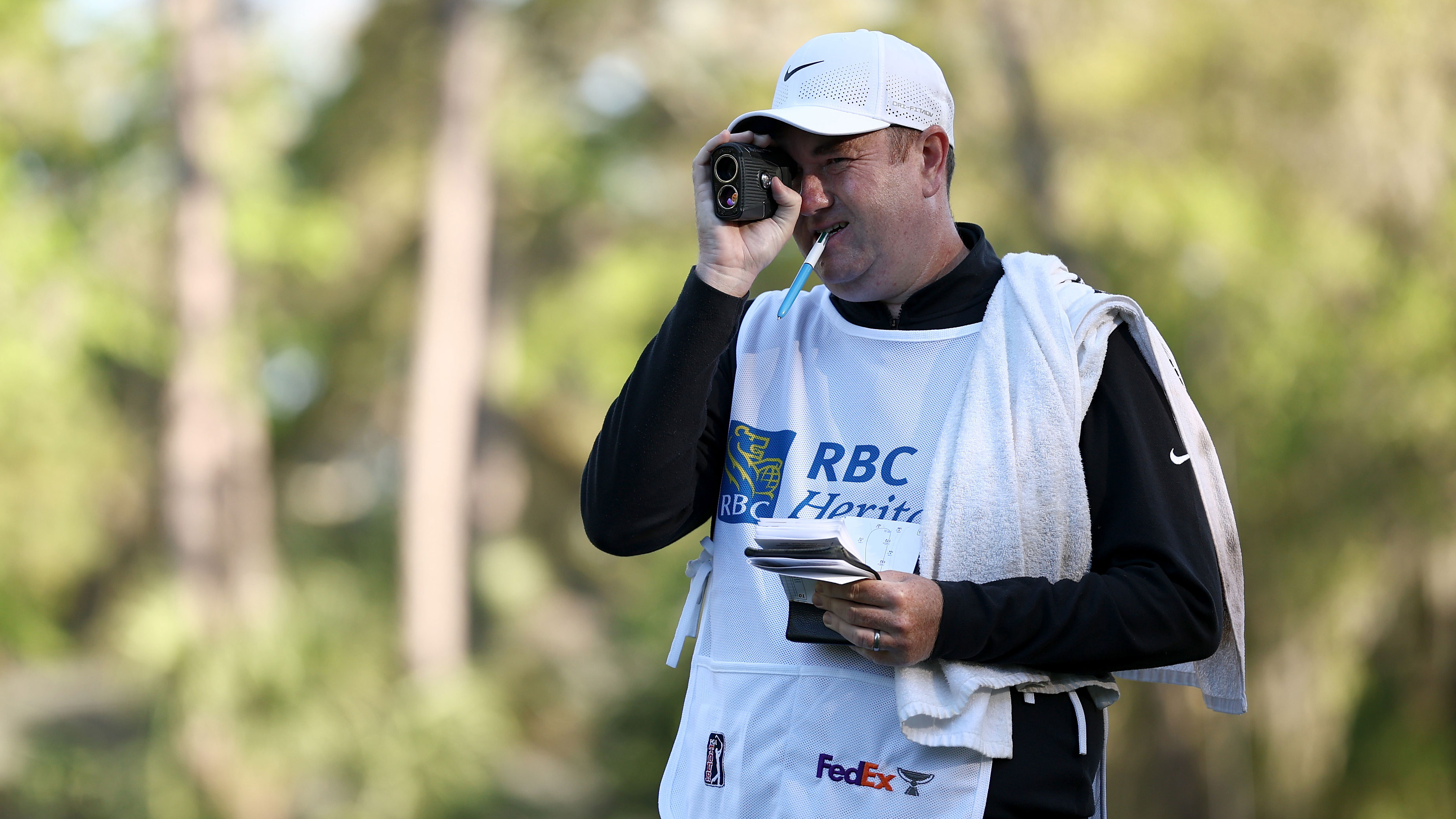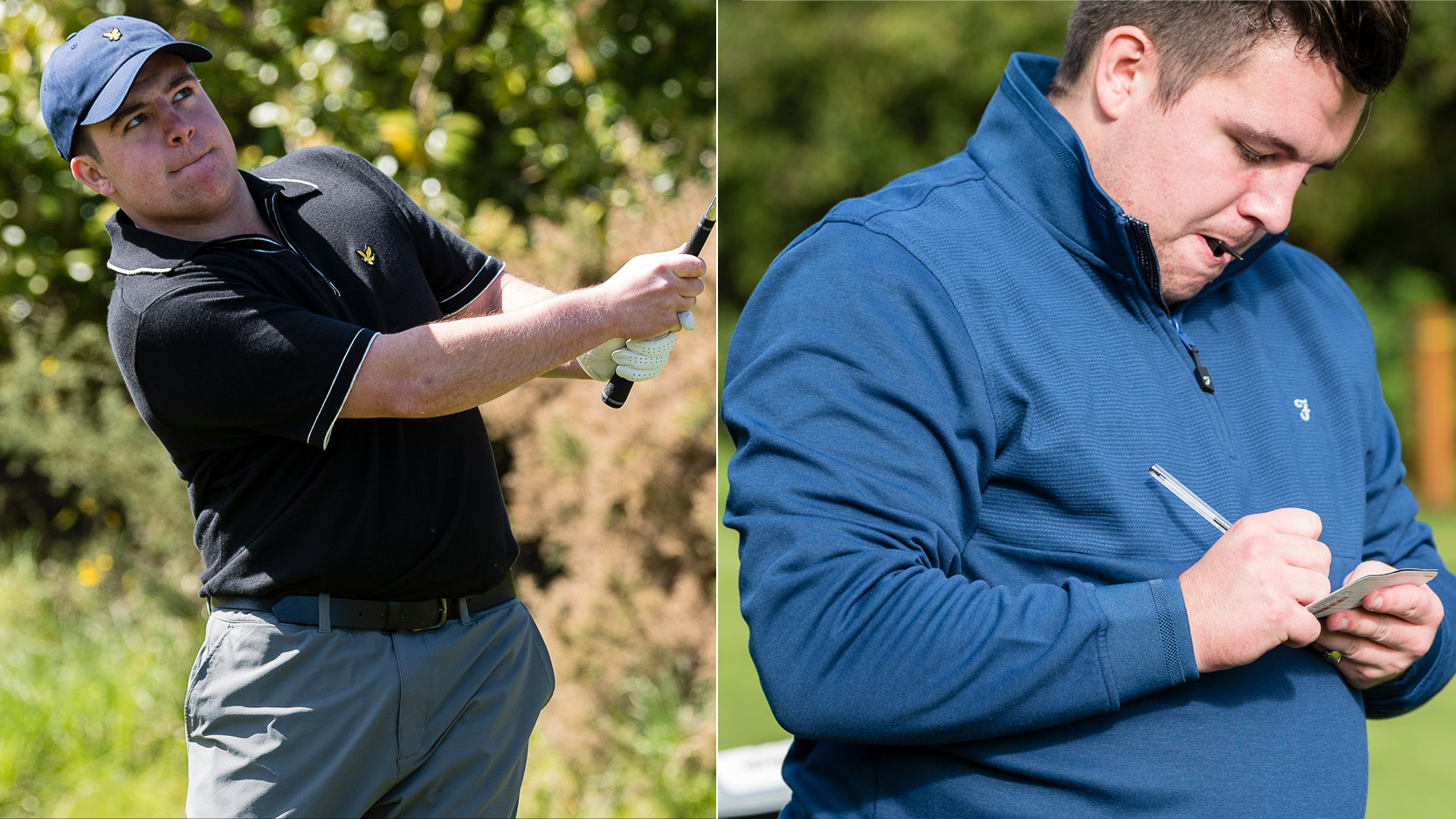10 Surprising Things Tour Caddies Do… That All Club Golfers Can Learn From
We can all learn a lot from caddies, as a former DP World Tour looper tells us here...


Alex Elliott
Wouldn’t it be nice if we had a caddie to look after us whenever we played - to clean our clubs, keep us topped up with food and drink, and to give us an exact yardage prior to every shot.
Most of the time, we’re out there on our own. Caddies, if we ever have one, are a treat. That said, you can learn a thing or two from caddies without actually having one on your bag.
Keen to understand a little more about how they operate on the course, we asked Top 50 Coach Alex Elliott, who caddied on the DP World Tour for nearly six years, what club golfers can learn from caddies.
1. KNOW YOUR MISSES
I wouldn’t expect club golfers to walk the course prior to playing somewhere new, but there’s nothing to stop you making some notes in your home course’s yardage booklet - which you can then keep in your bag.
Start off by putting a series of ticks and crosses for the spots where you can and cannot miss on each hole, which can help you to keep doubles and big numbers off your scorecard.
I’m amazed more amateurs don’t actually do this - it’s so easy, and can really help improve your course management.
2. WORK OUT LAY UPS
On a similar note, know where your lay ups are on the par 5s - and mark them down in that yardage booklet.
Get the Golf Monthly Newsletter
Subscribe to the Golf Monthly newsletter to stay up to date with all the latest tour news, equipment news, reviews, head-to-heads and buyer’s guides from our team of experienced experts.
Most club golfers aren’t hitting the green in two on a par 5, so pick a spot that you’re comfortable with.
I’d often ask the question, 'Is it really worth going for the green in two?' Sometimes you’ll have a better chance of birdie or par by laying up.
On these top two points, what you’re actually doing here is giving yourself confidence, helping you to clear your mind of doubts before you go up and hit the shot.
3. MAKE KEY NOTES

Every golfer should make full use of their yardage booklet by making notes
Shot tracking technology is great, but nothing can beat your own notes. Even the best golf rangefinders can’t compete with your own homework!
On the greens, I’d put loads of arrows to highlight where putts would generally move from. I remember writing notes like, "Spins this way a lot" with an arrow.
I’d also write down what club Tom [Murray] hit and how far it went. For example, 183 yards, 5i (5-iron) into the wind.
You don’t need to make loads of notes: distance, wind direction, club, and how well you hit the shot is enough.
4. PUTTING KNOWLEDGE

How well do you know the pin positions at your golf club?
Often, referees would go out and put tiny little dots on the greens for where the next day’s pin positions would be, which caddies would be on the lookout for!
What can you learn from this? For me, it highlights the importance of getting to know the subtleties of each green.
If you can, use your practice rounds during the week to hit some putts from the toughest spots on each hole.
Come the weekend competition, which is often when the pins are placed in the most difficult positions, you’ll be well prepared.
Tom [Murray] would chip and putt to a rubber circle that I’d move around the green. Get yourself one of those - it’s one of the best golf training aids out there.
5. SWING BIBLE
I’d also write a kind of ‘swing bible’ for Tom, which is something club golfers could certainly do for themselves.
'Left shoulder low, don’t drag left side,' is one of the good swing thoughts Tom would have. I'd note that down.
You can forget what you’re doing when you’re playing well, so having these words written down to remind you can be a real help.
I’m not saying go and write a long list of technical terms in your yardage booklet, but noting down one or two good swing thoughts - and these might change over time - is a great idea.
6. WIND DIRECTION
I wasn’t one for throwing grass up in the air to judge wind direction. If I did do that, it was usually to confirm a few things.
You’re not allowed to carry a compass with you, but most scorecards have one on the back, which will probably come as a surprise to a lot of golfers.
Something else that I used to write down was how the wind direction would tend to change over the course of a day.
Again, this sounds so simple, yet it’s not something most club golfers would do. It can be so useful and make such a big difference.
Quiz: 10 questions all golfers should know the answer to
7. NUTRITION

Don't underestimate how important it is to stay hydrated when you're playing a round of golf
Something to eat and drink every three holes - that’s what Tom and I stuck to. I was in charge of making the sandwiches!
Every few holes it would be, ‘Here, have a bite… have another bite.’ Staying hydrated and eating more of the right stuff is definitely something recreational golfers could be better at.
Tour players are well looked after, but at club level it’s easy to run out of supplies. Stock up before you go out so you know you have enough to last 18 holes.
8. STOCK YARDAGES
Most players should know how far each club goes eight times out of 10. If it’s a bit warmer, the ball travels slightly further; and at altitude further again.
Over the course of a season, I’d compile notes on how far the ball would travel with each club at different times of the day.
Take Foshan in China, for example. That 5-iron at 6am in the morning isn’t going to carry 200 yards.
A lot of the time we’re not hitting balls on a Trackman, so it’s up to us to make notes.
9. STAYING POSITIVE
One of my jobs as a caddie was to help Tom feel comfortable and good about his game.
This can be a hard game at times, as we all hit bad shots. However, you only have to look at Rory McIlroy’s win at The Masters, where he had to respond to three setbacks in his final round, to appreciate how the best players in the world are able to put poor shots behind them.
I go back to what I said about creating a 'swing bible’. Often, just saying a word or phrase can help a player to step up and play the shot they need to.
This is something you can do yourself to help you focus on the next shot and to keep yourself feeling positive.
10. PRE ROUND WARM UP
I was always made sure Tom stuck to his pre round routine. The order was as follows: putting, chipping, iron play, and then driver last - for the simple reason that this would normally be the club he'd hit off the first tee.
If you finish off with putting, which is what a lot of club golfers do, you've really just warmed down by the time you get to the first tee.

Michael has been with Golf Monthly since 2008. A multimedia journalist, he has also worked for The Football Association, where he created content to support the England football team, The FA Cup, London 2012, and FA Women's Super League. As content editor at Foremost Golf, Michael worked closely with golf's biggest equipment manufacturers and has developed an in-depth knowledge of this side of the industry. He's a regular contributor, covering instruction, equipment, travel and feature content. Michael has interviewed many of the game's biggest stars, including seven World No.1s, and has attended and reported on numerous Major Championships and Ryder Cups around the world. He's a member of Formby Golf Club in Merseyside, UK.
- Alex ElliottTop 50 Coach
You must confirm your public display name before commenting
Please logout and then login again, you will then be prompted to enter your display name.
-
 My Golf Club Membership Has Increased 36%... And That's Not Even The Most Disgraceful Part!
My Golf Club Membership Has Increased 36%... And That's Not Even The Most Disgraceful Part!My golf club membership has increased a whopping 36% in 2025, but the worst part is that it's been changed without my permission, or any consultation
-
 Rory McIlroy Positive Over New Driver Despite Some Teething Problems Ahead Of US Open Test
Rory McIlroy Positive Over New Driver Despite Some Teething Problems Ahead Of US Open TestRory McIlroy remained positive about the new driver he's put in play, but saw some teething problems he'll have to straighten out before tackling the US Open